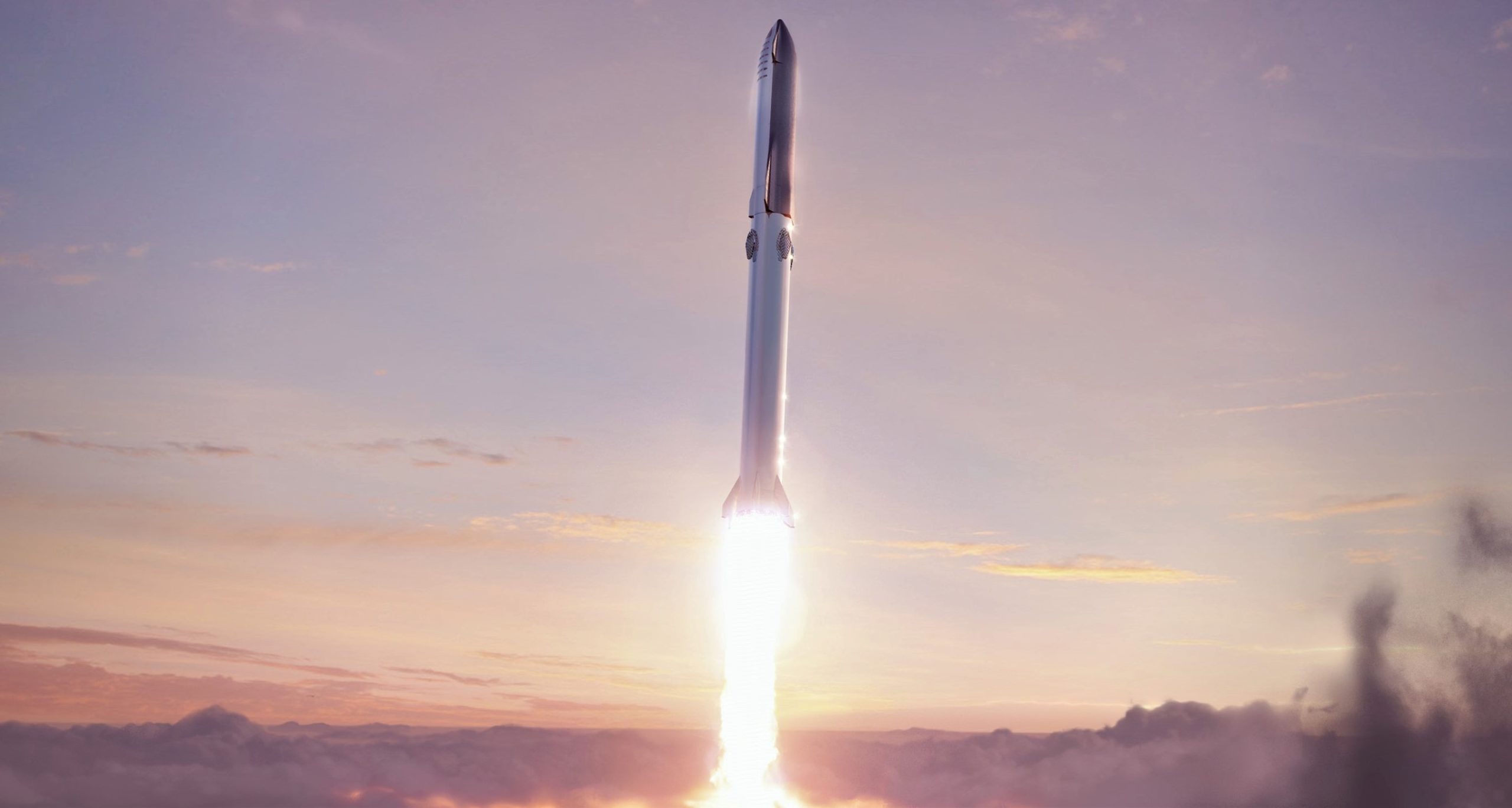
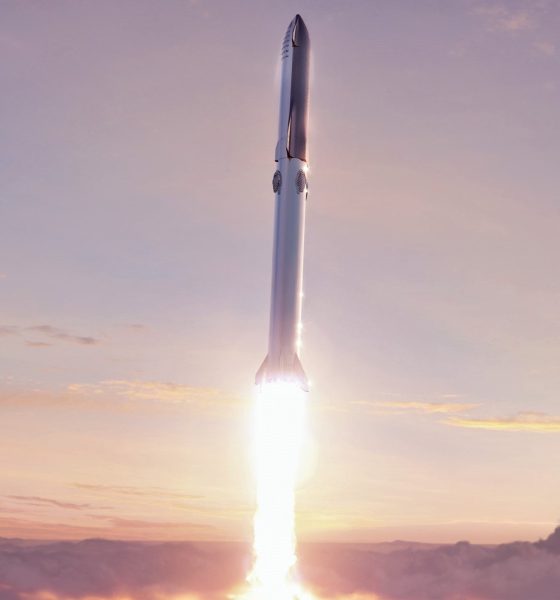
News
SpaceX’s Starship Super Heavy booster needs a custom assembly tower
SpaceX CEO Elon Musk has confirmed that Starship’s Super Heavy rocket booster will get its own tower-like vehicle assembly building (VAB) – and work on the structure may have already begun.
While the only visible work SpaceX has thus far completed on its next-generation Starship launch vehicle is related to the more complex and unproven upper stage of the rocket, its Super Heavy first stage (booster) is just as critical. For SpaceX, Starship was the perfect starting point, itself following on the footsteps of a largely successful multi-year Raptor engine development program. Substantially smaller than Super Heavy and requiring 5-10 times fewer engines, Starship serves as a testbed for an almost entirely new suite of technologies and strategies SpaceX is employing to build massive rockets out of commodity steel.
In recent months, particularly following the first successful pressure test of a full-scale Starship tank section in April, SpaceX has effectively proven that those uncharacteristically cheap and simple materials and methods can, in fact, build rocket structures that should stand up to orbital spaceflight. In theory, aside from the booster’s 31-engine thrust structure, the same methods and materials used to build Starships can be applied unchanged to manufacture Super Heavy. The booster’s almost unfathomable size, however, will necessitate its own dedicated assembly facilities.
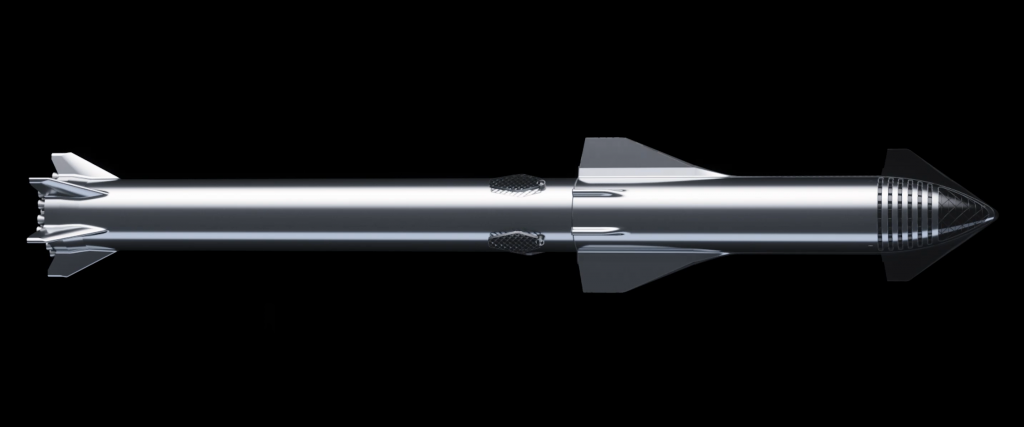
While Starship itself is not exactly small at ~50m (165 ft) tall and 9m (30ft) wide, the Super Heavy booster tasked with launching the ship on its way to orbit will easily be the largest individual rocket stage ever built. Currently expected to measure 70m (230 ft) tall, Super Heavy – just the first stage of the Starship launch vehicle – will already be as tall as an entire Falcon 9 or Falcon Heavy and weigh roughly three times more than the latter triple-booster rocket when fully fueled. At liftoff, Super Heavy will produce more than triple the thrust of Falcon Heavy and double the thrust of Saturn V, the most powerful liquid-fueled rocket to reach orbit.
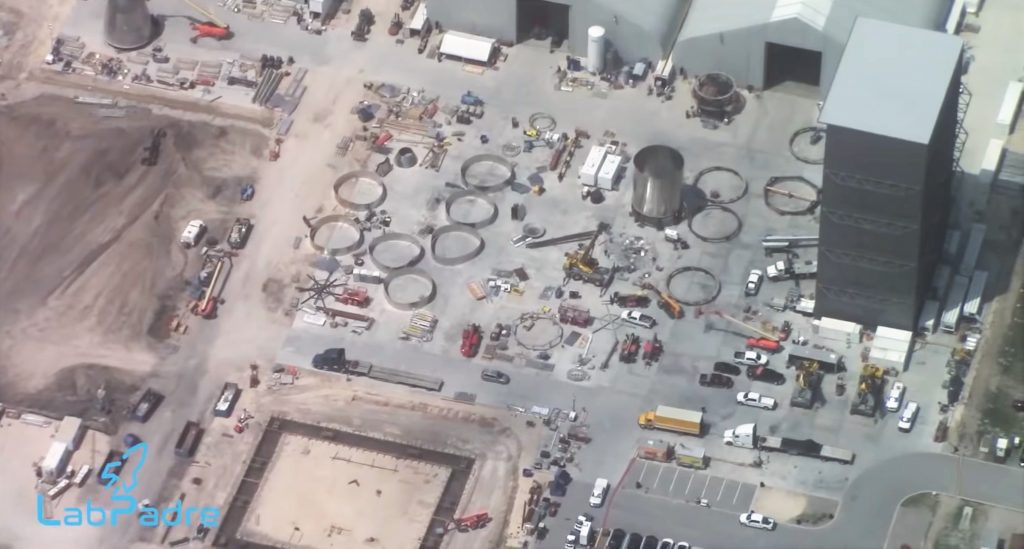
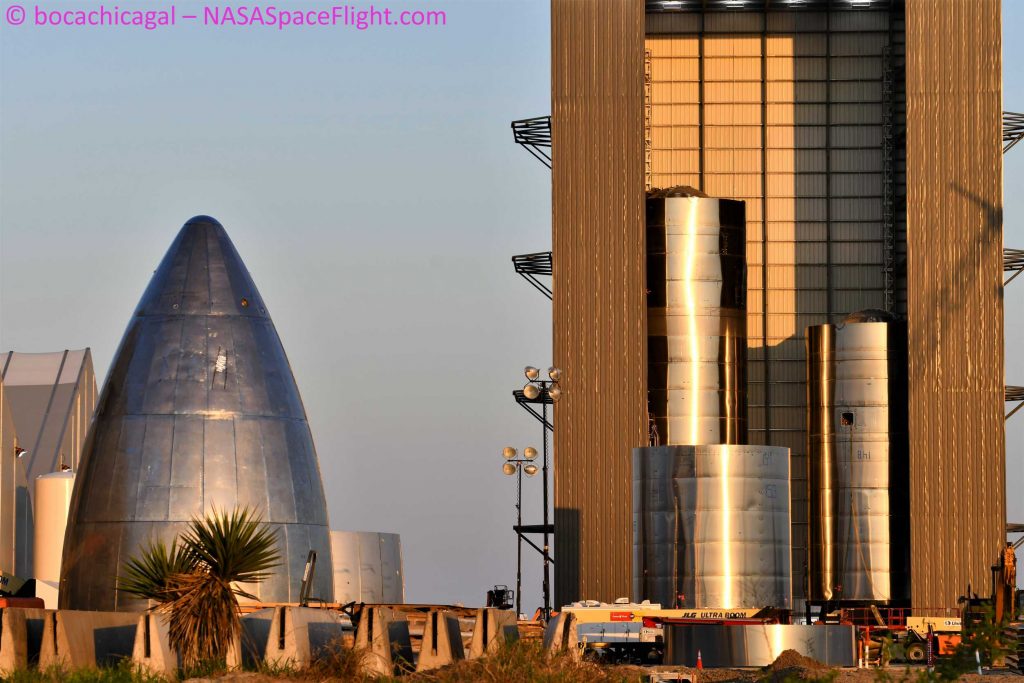
Thanks to the sheer size of the booster, SpaceX’s existing Starship-sized vehicle/vertical assembly building (VAB) is far too small for Super Heavy and is even too short to fully stack a ~50m Starship. SpaceX’s contractor of choice started assembling that VAB around January 15th and the facility was able to begin supporting its first Starship stacking and welding operations on March 2nd, just a month and a half later, with the structure fully completed by March 18th. As such, assuming the in-work foundation is as close to completion as it seems and SpaceX uses the same contractor for the next building, Super Heavy’s VAB could be ready to build the first massive booster prototype as early as July or August. Things could take a bit longer given that Musk says the booster VAB will be 81m (265 ft) tall, nearly twice the height of Starship’s VAB, but likely by no more than a few weeks.
That timeline meshes well with a senior SpaceX engineer and executive’s recent suggestion that the first orbital Starship launch attempt could still happen before the end of the year. Of course, for Super Heavy to become a genuine priority for SpaceX and receive the resources necessary to achieve that extremely ambitious goal, Starship will have to perform almost flawlessly during a series of increasingly challenging tests planned over the next few months. First up, SpaceX needs to finish repairing the launch pad after Starship SN4 exploded during testing and Starship SN5 needs to be transported to the pad to complete acceptance tests, static fire(s), and its first 150m (~500 ft) hop test. After that, SpaceX will either move on to a 2 km (1.25 mi) hop or a more ambitious 20 km (12.5 mi) flight designed to test Starship’s skydiver-like approach to landing.
If Starship SN5 or SN6 manage to complete those aforementioned tests, the horse may actually be in front of the cart for Super Heavy prototype production and Starship’s first orbital launch attempt.
Check out Teslarati’s Marketplace! We offer Tesla accessories, including for the Tesla Cybertruck and Tesla Model 3.

Investor's Corner
Tesla gets price target bump, citing growing lead in self-driving

Tesla (NASDAQ: TSLA) stock received a price target update from Pierre Ferragu of Wall Street firm New Street Research, citing the company’s growing lead in self-driving and autonomy.
On Tuesday, Ferragu bumped his price target from $520 to $600, stating that the consensus from the Consumer Electronics Show in Las Vegas was that Tesla’s lead in autonomy has been sustained, is growing, and sits at a multiple-year lead over its competitors.
CES 2026 validates Tesla’s FSD strategy, but there’s a big lag for rivals: analyst
“The signal from Vegas is loud and clear,” the analyst writes. “The industry isn’t catching up to Tesla; it is actively validating Tesla’s strategy…just with a 12-year lag.”
The note shows that the company’s prowess in vehicle autonomy is being solidified by lagging competitors that claim to have the best method. The only problem is that Tesla’s Vision-based approach, which it adopted back in 2022 with the Model 3 and Model Y initially, has been proven to be more effective than competitors’ approach, which utilizes other technology, such as LiDAR and sensors.
Currently, Tesla shares are sitting at around $433, as the company’s stock price closed at $432.96 on Tuesday afternoon.
Ferragu’s consensus on Tesla shares echoes that of other Wall Street analysts who are bullish on the company’s stock and position within the AI, autonomy, and robotics sector.
Dan Ives of Wedbush wrote in a note in mid-December that he anticipates Tesla having a massive 2026, and could reach a $3 trillion valuation this year, especially with the “AI chapter” taking hold of the narrative at the company.
Ives also said that the big step in the right direction for Tesla will be initiating production of the Cybercab, as well as expanding on the Robotaxi program through the next 12 months:
“…as full-scale volume production begins with the autonomous and robotics roadmap…The company has started to test the all-important Cybercab in Austin over the past few weeks, which is an incremental step towards launching in 2026 with important volume production of Cybercabs starting in April/May, which remains the golden goose in unlocking TSLA’s AI valuation.”
Tesla analyst breaks down delivery report: ‘A step in the right direction’
Tesla has transitioned from an automaker to a full-fledged AI company, and its Robotaxi and Cybercab programs, fueled by the Full Self-Driving suite, are leading the charge moving forward. In 2026, there are major goals the company has outlined. The first is removing Safety Drivers from vehicles in Austin, Texas, one of the areas where it operates a ride-hailing service within the U.S.
Ultimately, Tesla will aim to launch a Level 5 autonomy suite to the public in the coming years.
Elon Musk
Elon Musk’s Biggest Revelations on AI, Robots, and the Future of Work from the Moonshots Podcast

Elon Musk’s appearance on the Moonshots with Peter Diamandis podcast was packed with bold predictions, candid admissions, and surprising tech insights. The nearly three-hour conversation covered everything from artificial intelligence to humanoid robots, geopolitics, and the future of work. Here are the top 10 most intriguing takeaways:
-
Aggressive AGI Timeline Predictions
Musk offered a detailed view on when artificial general intelligence (AGI) could emerge, suggesting it may arrive sooner than many expect, emphasizing both transformative potential and risks.
-
U.S. vs. China in the AI Race
He discussed the strategic competition between the United States and China over AI development, noting that geopolitical dynamics will shape how and who leads in the next decades.
-
Future of Job Markets
Musk touched on how AI and automation could reshape employment, predicting massive boosts in productivity alongside potential disruptions in traditional work structures.
-
Clean Energy Transition
A recurring theme was the role of clean energy in future economies, with Musk reiterating the importance of scaling sustainable power generation and storage.
-
Humanoid Robots Are Coming
On the podcast, Musk elaborated on Tesla’s work on humanoid robots, hinting at timelines and applications that go beyond factories to general-purpose assistance.
-
Tesla Roadster “Last Human-Driven Car”
Outside the core discussion topics, Musk teased features of the upcoming Tesla Roadster — calling it “the best of the last of the human-driven cars” and suggesting safety won’t be its main selling point.
-
The Role of AI in Clean Energy and Robotics
Linking AI to both energy optimization and robotics, Musk explained how smarter systems could accelerate decarbonization and task automation across industries.
-
U.S. Innovation Leadership
Musk argued that maintaining American leadership in key tech sectors like AI, space, and robotics should be a national priority, with thoughtful policy and investment.
-
Job Creation vs. Job Elimination
While acknowledging automation’s disruptive effects, he also outlined scenarios where new industries and opportunities could emerge, particularly in AI, space, and advanced manufacturing.
-
Long-Term Vision for Humanity
Throughout the conversation, Musk revisited his long-term philosophical views — including a belief in humanity’s responsibility to become a multi-planetary and technologically empowered species.
Whether you agree with Musk’s optimism or not, the podcast offers a window into the thinking of one of the most influential figures in tech today, in and why his visions continue to spark debate and inspiration.
Elon Musk
Elon Musk just said some crazy stuff about the Tesla Roadster

Elon Musk appeared on the Moonshots podcast with Peter Diamandis today to discuss AGI, U.S. vs. China, Tesla, and some other interesting topics, but there was some discussion about the upcoming unveiling of the Roadster, the company’s electric supercar that will arrive several years after it was initially slated for release.
Musk made some pretty amazing claims about the Roadster; we already know it is supposed to be lightning-fast and could even hover, if Tesla gets everything to happen the way it wants to. However, the car has some pretty crazy capabilities, some of which have not even been revealed.
On the podcast, Musk said:
“This is not a…safety is not the main goal. If you buy a Ferrari, safety is not the number one goal. I say, if safety is your number one goal, do not buy the Roadster…We’ll aspire not to kill anyone in this car. It’ll be the best of the last of the human-driven cars. The best of the last.”
🚨 Elon on the Roadster unveiling, scheduled for April 1:
— TESLARATI (@Teslarati) January 6, 2026
Musk makes a good point: people who buy expensive sports cars with ridiculous top speeds and acceleration rates do not buy them to be safe. They hope they are safe in case of an emergency or crash, but safety is not at the forefront of their thoughts, because nobody buys a car thinking they’ll crash it.
The Roadster is truly going to push the limits and capabilities of passenger vehicles; there’s no doubt about that. Tesla plans to show off the new version car for the first time on April 1, and Musk has only hinted at what is possible with it.
Musk said back in November:
“Whether it’s good or bad, it will be unforgettable. My friend Peter Thiel once reflected that the future was supposed to have flying cars, but we don’t have flying cars. I think if Peter wants a flying car, he should be able to buy one…I think it has a shot at being the most memorable product unveiling ever. [It will be unveiled] hopefully before the end of the year. You know, we need to make sure that it works. This is some crazy technology in this car. Let’s just put it this way: if you took all the James Bond cars and combined them, it’s crazier than that.”
Production is set to begin between 12 and 18 months after the unveiling, which would put the car out sometime in 2027. Hopefully, Tesla is able to stay on track with the scheduling of the Roadster; many people have been waiting a long time for it.








